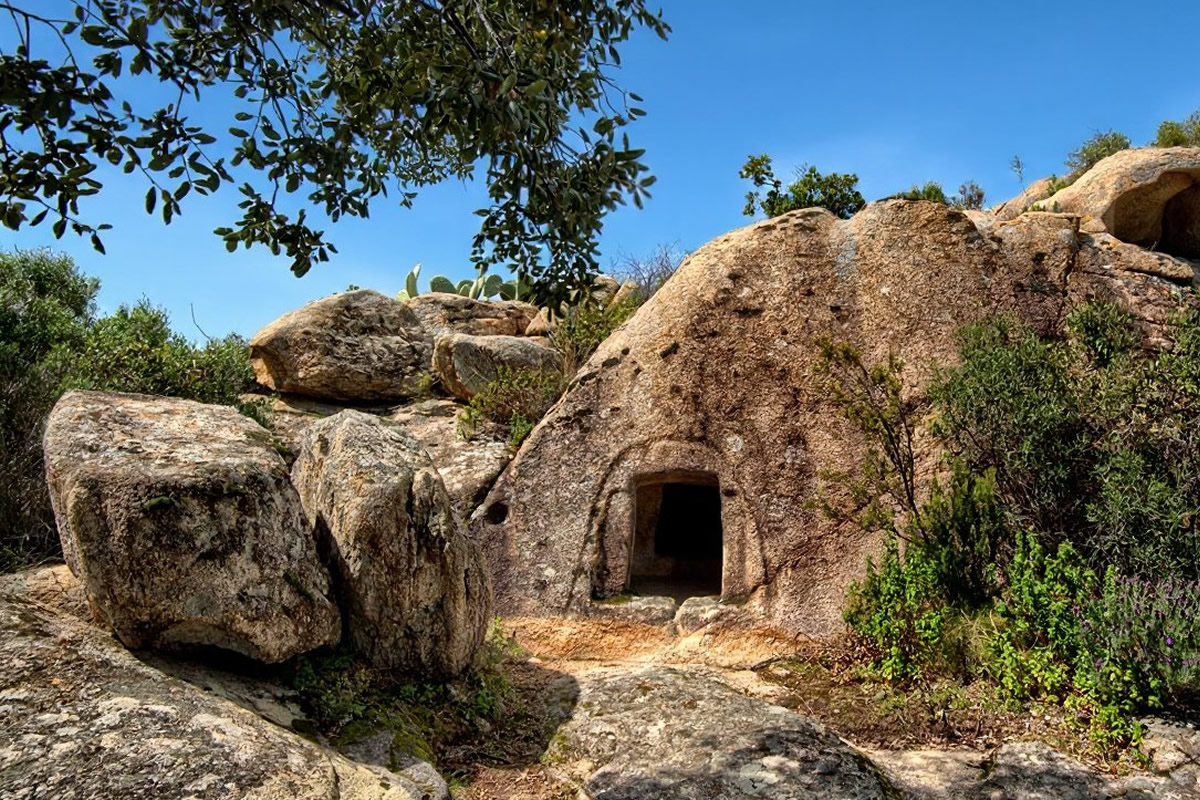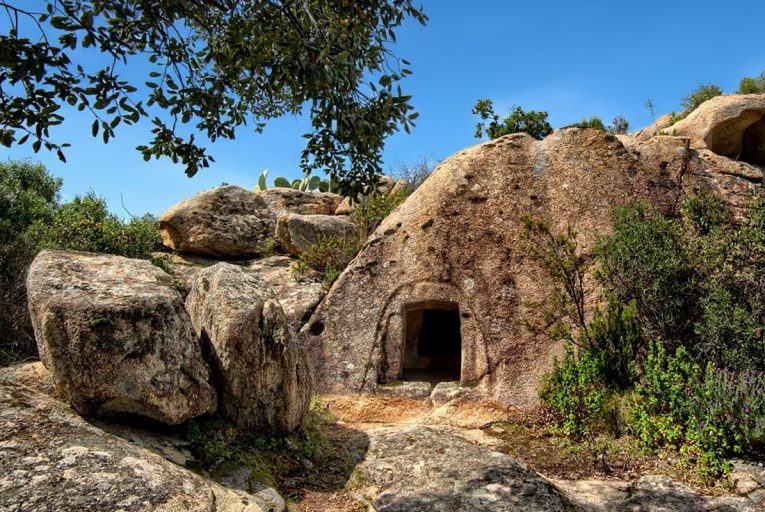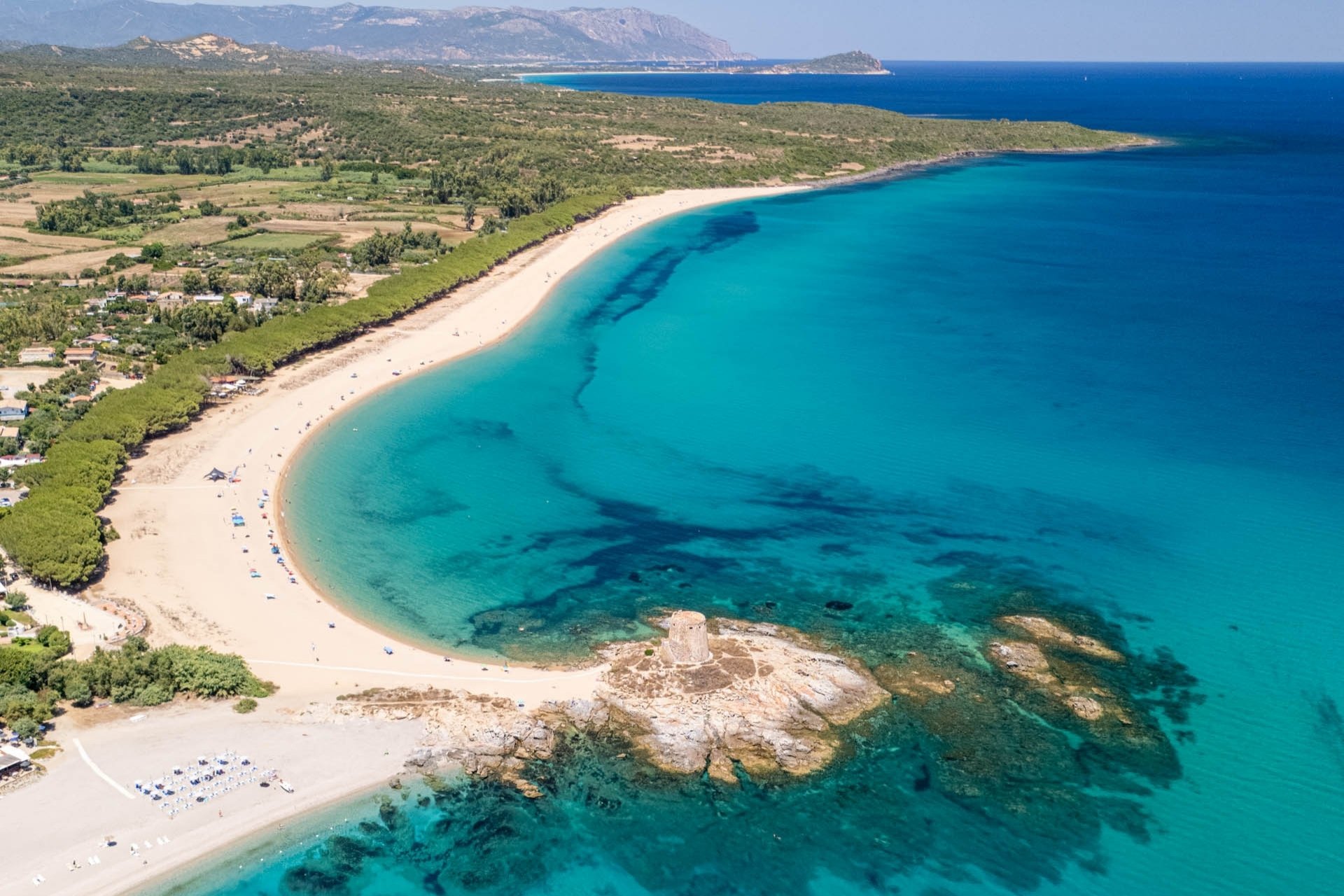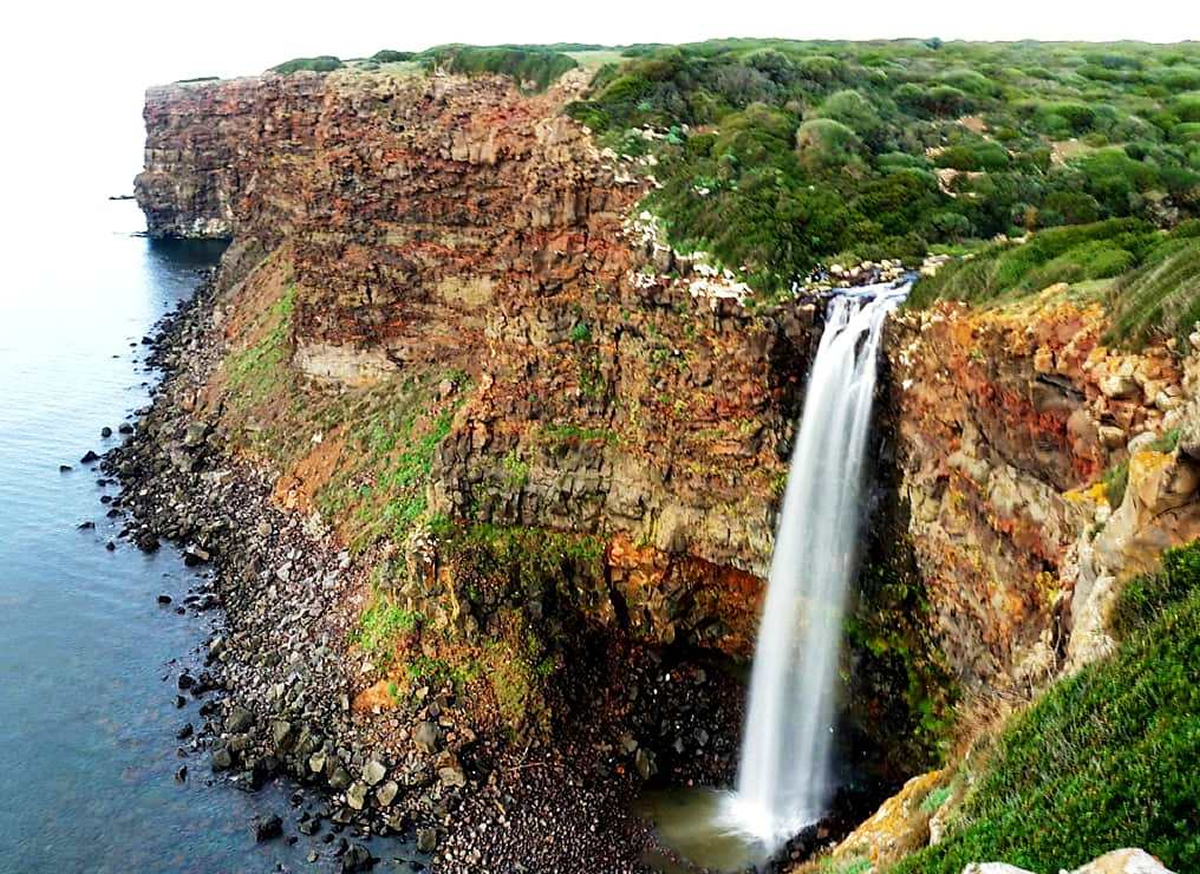The Domus de Janas in Sardiniahave officially become part of the UNESCO World Heritage Site, a recognition that underscores the historical, archaeological, and symbolic importance of these ancient funerary monuments.
Although Sardinia is best known for the Nuragic period, the Domus de Janas represent an even more remote phase of the island’s history: that of the Pre-Nuragic civilization, dating back to the Late Neolithic period, between 4000 and 3000 BC.
What are Domus de Janas?
The term “Domus de Janas” literally means “houses of fairies” or “witches” in the Sardinian language, and stems from the popular tradition according to which these small caves dug into the rock were inhabited by magical beings, the janas, benevolent yet mysterious creatures. In reality, these are tombs dug into the living rock, built by the island’s first agricultural and pastoral communities. The interior of these tombs often resembles a house, with rooms, sloping ceilings, and symbolic decorations.
A widespread and widespread phenomenon
Domus de Janas are present throughout Sardinia, with over 3,000 recorded underground tombs (and many more yet to be discovered). They are located near plateaus, hills, and rocky outcrops, often organized into necropolises with dozens of grouped tombs. They represent one of the most important archaeological testimonies of prehistoric Europe and offer precious clues to the spirituality, social organization, and construction techniques of the Neolithic Sardinian populations.
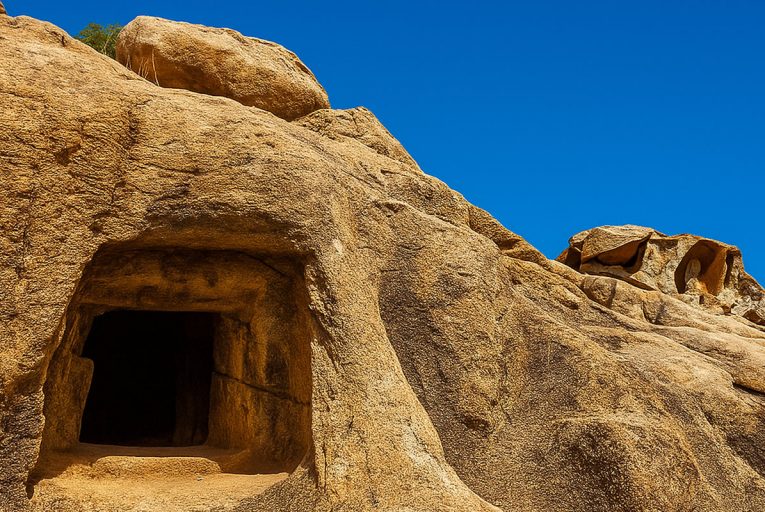
The Domus de Janas in Gallura
In Gallura, a mountainous, granite region in northeastern Sardinia, the Domus de Janas are fewer than in other areas but no less fascinating. Among the best-known are those of the Li Muri necropolis, near Arzachena. Here, passage tombs with stelae and megalithic circles recall customs common to other areas of the Mediterranean.
An important site is also located in Olbia, in the locality of Cabu Abbas, where there is a Domus de Janas carved into the granite, positioned on a panoramic hill. Its strategic location and the surrounding natural setting make it a charming and easily accessible stop for those staying in the Gallura city.
Other significant examples are the domus of Calangianus and Monti, immersed in a landscape of cork oak forests and wind-shaped granite boulders. These prehistoric burials testify to the spread of the cult of the dead even in an area less hospitable to rock carving than other parts of the island.
Would you like to stay in Gallura or Olbia on your tour? Felix Hotels offers a variety of options.
Just minutes from Arzachena, the Country Resort & Restaurant Parco degli Ulivioffers an immersive experience in the authentic nature of Gallura, among centuries-old olive trees, the scent of lavender, and spectacular granite formations. Located just two kilometers from the town center, the resort, complete with an excellent gourmet restaurant, is the ideal starting point for Explore the area’s Domus de Janas and, at the same time, enjoy moments of peace and relaxation.
The Hotel Felix Olbia,smart hotel between the city center and the Costa Smeralda, is the ideal choice for those who want to combine comfort, technology, and a strategic location. Overlooking Viale Aldo Moro, one of Olbia’s main streets, the hotel is just minutes from the historic center and a short distance from the area’s Domus del Janas.
The Domus de Janas in Ogliastra
Ogliastra, the wild and mountainous heart of central-eastern Sardinia, is one of the areas with the highest concentration of Domus de Janas. Spectacular sites are found here, both for the number of tombs and their state of preservation. One of the most famous necropolises is that of Monte Arista, in the Lotzorai area, with tombs decorated with spiral carvings and bull motifs.
Important examples are also found near Bari Sardo, where you can visit the Pizzu ‘e Monti site, with several Domus carved into rock faces and surrounded by Mediterranean scrub. These often little-known sites are ideal for outdoor archaeological excursions and to discover an unspoiled Ogliastra.
Other significant sites are the Domus de Janas Lotzorai di Tracucu, carved into the limestone rock of the mountain slopes. In Ogliastra, the tradition of the janas is still alive in oral tales: the ancient tombs are considered sacred and mysterious places, often associated with legends of hidden treasures, magic, and fertility rites.
And if you’re looking for a hotel in Ogliastra where you can rest while exploring the area’s Domus de Janas, the Galanias Hotel & Retreat could give you one more reason to stay
Immersed in the pristine nature of Ogliastra, it is a peaceful refuge just steps from the Torre di Barì beach, but thanks to its secluded location, it is the perfect place for those seeking relaxation and authenticity.
A harmony of comfort, nature, and tranquility for a regenerating holiday in the heart of Sardinia.
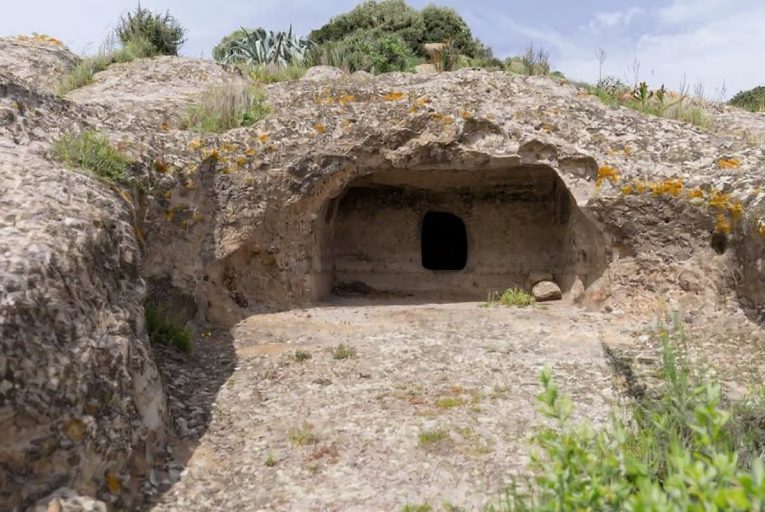
The Domus de Janas in Montiferru
Montiferru, a volcanic massif in central-western Sardinia, is home to some of the most evocative Domus de Janas on the island. The necropolis of Cornus-Montresta, for example, stands out for its panoramic location and the richness of its interior spaces, with complex tombs that can have up to ten rooms.
There are several lesser-known but fascinating Domus de Janas, such as those of Sennariolo, Scano di Montiferro, and Cuglieri, often nestled in basalt landscapes that testify to the area’s volcanic origins. Their work requires a sophisticated technique, made even more extraordinary by the hardness of the stone.
These sites offer a rare blend of archaeology and nature, perfect for those who want to combine hiking with the discovery of ancestral places.
Here too, Felix Hotels offers another reason to appreciate the area: the Felix Hotel La Baja in Santa Caterina di Pittinuri. Offering guests an exclusive panorama overlooking the sea and the tower dominating the promontory, the hotel has a restaurant, a swimming pool, and a pool bar, offering breathtaking sea views. It is the ideal starting point for exploring the Domus de Janas of Montiferru.
A living legacy over time
The Domus de Janas in Sardiniaare not just archaeological monuments: they are silent witnesses to an ancient civilization, capable of speaking even today through stone, shapes, and legends. UNESCO recognition confirms their universal value, but their true strength lies in their profound connection to the land and the collective memory of the Sardinian people.
Visiting a Domus de Janas means taking a journey through time, discovering the roots of Mediterranean spirituality, and observing the ingenuity of those who, thousands of years ago, transformed the rock into a home for eternity.
And Felix Hotels, with its refined hospitality, gives you another reason to visit them. We are waiting for you!


